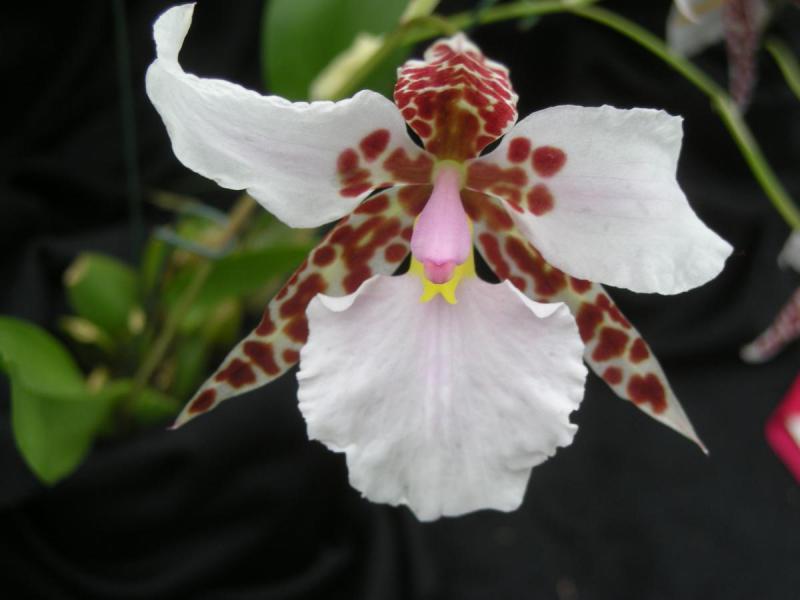Rhynchostele rossii
Also known as: Ross' Rhynchostele or Rhynchostele rossii f. albens Odontoglossum rossii h.v. mommianum Odontoglossum rossii h.v. pauwelsiae Odontoglossum rossii h.v. immaculatum Odontoglossum aspersum h.v. bosschereanum Rhynchostele rossii h.f. roseum Rhynchostele rossii h.v. majus Odontoglossum rossii var. amesianum Odontoglossum youngii Odontoglossum rossii var. albens Odontoglossum rossii var. warnerianum Odontoglossum rubescens Odontoglossum rossii h.v. majus Odontoglossum rossii h.v. rubescens Odontoglossum aspersum var. violaceum Odontoglossum warnerianum Odontoglossum aspersum Rhynchostele aspersa Amparoa aspersa Odontoglossum caerulescens Odontoglossum aspersum var. fulvidum Oncidium caerulescens Odontoglossum rossii subvar. caerulescens Odontoglossum rossii var. aspersum Odontoglossum rossii var. acuminatum in the subfamily: Epidendroideae
Native to: Chiapas - Mexico Honduras Nicaragua Oaxaca - Mexico Puebla - Mexico Veracruz - Mexico
General Information
Ross' Rhynchostele is a miniature cool to warm growing epiphytic orchid belonging to the sub family Epidendroideae native to Mexico, Honduras and Nicaragua. It is named after the English Orchid Collector in Mexico in the 19th century.
Plant Description
Grows to 10-25cm. Each new growth has numerous leathery elliptic leaves that grow to 5-20cm long. Pseudobulbs grow to 3-6cm
Flowers
Numerous blossoms appear during Summer and Winter
Blooming Season
- Summer
- Winter
Substrate(s)
- Coarse
Care Notes
These orchids like to be kept on the dry side, but may need to be watered daily during warm weather, and prefer a well draining mix or also do well mounted, provided they can be watered regularly.
These are quite a forgiving orchid, there are no special requirements to get this orchid to flower, just good care and consistent conditions. Larger plants may be more fussy and can react poorly to change; a poorly timed repotting, a pest infection or an unusually hot day can set them back for a couple of years. However, even plants that have been treated poorly can thrive, and if they are set back they often recover much stronger then they would otherwise be.
Climate
Grows at high elevations. Rainfall ranges from 3mm to 170mm per day, heaviest in June and lightest in January. Humidity ranges from 55% to 75%, highest in September and lowest in March. Temperature ranges from 4C to 27C, highest in April (12C to 27C) and lowest in January (4C to 21C).
Watering
Keep moisture levels up during hot weather as the plant is prone to dehydration
Fertiliser
Apply liquid based fertiliser per recommended directions. They can benefit from a high phosphate fertiliser leading up to flowering season, followed by a high nitrogen fertiliser when new growth appears, and a balanced fertiliser in other times. These orchids can also tolerate slow release fertiliser applied 1-2 pellets per cup (250ml) of media.
Use balanced fertiliser year round. Be sure to flush out excess fertiliser by running water through the media regularly year round. Apply fertiliser regularly at half strength year round. Use a low Nitrogen fertiliser year round. Use a high Phosphorous fertiliser year round.Potting
Due to the growth nature of these plants they are best mounted onto cork, tree fern slabs, or even trees if the climate suits. Water regularly especially in hot weather.
This plant does very well in baskets or suspended pots This plant does well mounted.




















